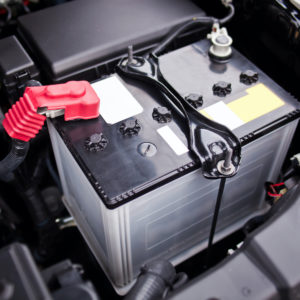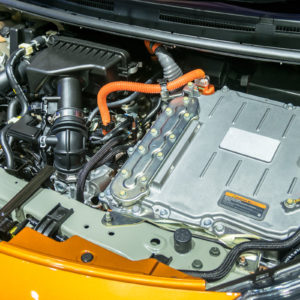A battery discharge warning is supposed to warn you that your vehicle’s battery is draining faster than it’s charging. It’s designed to prevent your battery from running out of charge, which can leave you unable to start your vehicle later on. If you see this warning, then your vehicle might run out of power, which may cause its electronics to fail.
The battery discharge warning alert may appear on the instrument panel or on the infotainment system depending on the vehicle manufacturer. For example, the battery discharge warning on Hyundai vehicles will read “Battery Discharge Warning. Please use the system after starting the vehicle.” In a BMW‘s and fewer vehicle models, it will display “Increased battery discharge when stationary. Electrical consumers were temporarily shut off.”
Some vehicles automatically deactivate non-essential electronics like the radio when the battery discharge warning is triggered to conserve battery power.
This warning usually comes up when you’re using the vehicle’s stereo or infotainment system while the engine is turned off. Battery discharge warnings can also be triggered when the engine is turned on or when you’re already driving at high speed. If this is the case, then your vehicle’s alternator or serpentine has a problem.
What Causes Battery Discharge?
Using electrical components when the engine isn’t running will discharge the battery. These include the radio, glove box light, or cabin light. Other electronics like the clock and passive alarm system also draw power from the battery even when the vehicle isn’t turned on. There’s also something called parasitic draw, which happens when a device in the vehicle is turned on when it isn’t supposed to. This can be a relay, a radio module that hasn’t powered down, or an air suspension that continues to run.
Batteries also naturally discharge over time, which is why vehicles that are unused for about a month or two typically have flat batteries. Of course, the rate of discharge may vary depending on the battery’s condition, the vehicle’s make and model, the rate of parasitic drain, and the temperature, but do note that older batteries tend to deplete their charge much faster than newer ones.

What Causes a Battery Discharge Warning Light?
Let’s look at some of the common causes of an illuminated battery discharge warning light.
Old Battery
One of the primary culprits of a battery discharge warning light is a battery that needs to be replaced. Batteries store electrical charge using chemical reactions between lead plates and an electrolyte solution. Over time, the battery will degrade and it will hold less charge and charge slower. Eventually, it’ll reach a point where the battery will refuse to hold a charge. This tends to happen after three or four years, but it does depend on the make and model of the vehicle and the type of battery used.
When the battery gets old, the alternator won’t be able to charge it, preventing you from starting your vehicle. The battery discharge warning light is supposed to warn you before this happens.
Leaving Lights or Electronics Turned On Overnight
If you leave electronics turned on overnight, your battery might be drained and your vehicle might show a battery discharge warning light the next day. The headlights are considered the most power-hungry, especially halogen bulbs. Headlights that have been left on overnight will surely drain your battery. Luckily, most vehicles emit warning sounds if the headlights are still on after the engine has been shut off.
Extremely Cold Temperatures
Batteries store electricity using chemical reactions. In extremely cold temperatures, the battery’s capacity and recharge rate will decrease dramatically. As a result, your vehicle might have difficulty charging the battery, potentially causing a battery discharge warning light.
Faulty Alternator
Vehicles rely on the alternator to power all of their electronics when the engine is turned on. It’s responsible for converting mechanical energy from the engine into electrical energy to recharge the battery.
A faulty alternator will cause the vehicle to rely on the battery to power electronics, which can lead to an illuminated battery discharge warning light. When your vehicle is exclusively relying on battery power, expect the battery to run out of charge quickly.
Short Drives
If you take your vehicle on short drives while using a lot of the vehicle’s electronics, then your battery will discharge faster than the alternator is able to recharge it. This problem can occur more frequently during winter when you might use heated seats and your vehicle’s heater more.
Short drives could also drain your battery since the starter motor requires a lot of power to start the engine. Similarly, turning off the engine immediately without giving the battery a chance to recharge can also deplete the battery.
If you think your illuminated battery discharge warning light is caused by insufficient charge, you can let your vehicle run for about 45 minutes to an hour to let the alternator charge the battery.
Many of the causes listed previously revolve around your vehicle’s battery. If you receive the battery discharge warning, the first order of business is to test the battery as soon as possible. Keep in mind that an illuminated discharge warning light can also be caused by improper connections between electrical components such as starter motors or because of an issue with the alternator.
Any information provided on this Website is for informational purposes only and is not intended to replace consultation with a professional mechanic. The accuracy and timeliness of the information may change from the time of publication.


















